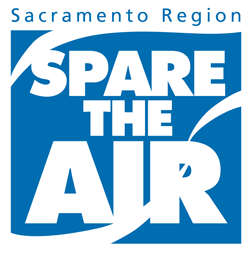Contents
- 1. What are the health effects of air pollution?
- 2. Why do foothill communities like Auburn and Grass Valley show high levels of ozone air pollution even though they're located away from major metropolitan areas?
- 3. What do Ozone Maps really show?
- 4. What is the main cause of ozone air pollution (smog) in the Sacramento region?
- 5. Is it safe to do exercise outdoors on a Spare The Air day?
- 6. What can I do to help on Spare The Air days?
- 7. If ozone is invisible, why is there poor visibility on Spare The Air days?
- 8. Why doesn't the air quality map include Chico? How are the boundaries of the map defined?
- 9. Where are the air monitoring sites located?
- 10. Is there an Air Alert email service for the Bay Area?
- 11. How are air quality maps produced?
1. What are the health effects of air pollution?
Even healthy people can experience impacts from polluted air including respiratory irritation or breathing difficulties during exercise or outdoor activities. Your actual risk of adverse effects depends on your current health status, the pollutant type and concentration, and the length of your exposure to the polluted air.
- Aggravated cardiovascular and respiratory illness
- Added stress to heart and lungs, which must work harder to supply the body with oxygen
- Damaged cells in the respiratory system
- Loss of lung capacity and decreased lung function
- Development of diseases such as asthma, bronchitis, emphysema, and possibly cancer
- Shortened life span
- Individuals with heart disease, coronary artery disease or congestive heart failure
- Individuals with lung diseases such as asthma, emphysema or chronic obstructive pulmonary disease (COPD)
- Pregnant women
- Outdoor workers
- Older adults and the elderly
- Children under age 14
- Athletes who exercise vigorously outdoors
2. Why do foothill communities like Auburn and Grass Valley show high levels of ozone air pollution even though they're located away from major metropolitan areas?
While the majority of ozone-forming emissions are produced by cars and other sources in the Sacramento Metropolitan area, prevailing winds usually carry pollution up into the foothills.
During this transport time, the emitted pollutants --- volatile organic compounds (VOCs) and oxides of nitrogen (NOx) -- continuously react with each other and the sun's ultraviolet rays to form ground-level ozone. By the time this polluted air reaches the foothills, the majority of the emissions have been converted to ozone causing the foothills to frequently have the highest ozone levels in the region.
When the wind is calm, the emissions and ozone are not transported to the foothills, but remain closer to Sacramento. However, when the wind blows from the north to the south, the highest ozone concentrations actually occur south of Sacramento in areas like Sloughhouse or Jackson.
Back to Top3. What do Ozone Maps really show?
Ozone maps found on SpareTheAir.com use real-time air monitoring data to show ozone air pollution levels throughout the region. Most of the time you'll notice ozone forming in the urban area and then moving "out of town" by the afternoon. However, on some occasions it appears that the ozone is being transported from one area to another area when it is actually forming at different rates in the two areas.
For example, in the morning it often appears that moderate levels of ozone are moving from the foothills down into the valley. In reality, ozone levels remain higher in the foothills overnight and through the following morning due to a lack of ozone consumption. Therefore, ozone reaches the moderate level earlier in the day.
To understand what is really being shown in the ozone maps you must take into account differences in ozone formation rates in different areas as well as transport by varying wind speeds and directions at all times of the day.
Back to Top4. What is the main cause of ozone air pollution (smog) in the Sacramento region?
Vehicles and other mobile sources, including trucks, locomotives, buses, motorcycles, agricultural equipment and construction equipment, contribute more than 70 percent of the oxides of nitrogen (NOx) and volatile organic compounds (VOCs) that form ground-level ozone air pollution.
Back to Top5. Is it safe to do exercise outdoors on a Spare The Air day?
It is safe to exercise in the morning. Ozone levels climb throughout the day resulting in higher readings in the afternoon and early evening hours. Morning is a good time for biking, walking, jogging or other types of strenuous outdoor activities. We recommend checking current air quality conditions here on SpareTheAir.com or using the Sacramento Region Air Quality app before participating in any outdoor exercise during the summer.
Back to Top6. What can I do to help on Spare The Air days?
The best way to reduce ozone pollution is to drive less. Mobile sources are the largest contributor to ozone in the Sacramento region. Reducing emissions when Spare The Air is in effect can prevent unhealthy levels of ozone pollution.
Carpooling, riding transit, telecommuting, trip-linking, bicycling and walking are all excellent ways to reduce your driving.
Back to Top7. If ozone is invisible, why is there poor visibility on Spare The Air days?
- The reddish-brown haze you often see hanging over the valley is caused by higher concentrations of oxides of nitrogen, better known as NOx. NOx is converted into ozone air pollution when it reacts with volatile organic compounds (VOCs) and "cooks" in the direct ultraviolet rays from the sun.
- Fine particles, consisting mainly of by-products from internal combustion engines like automobiles, construction and agricultural equipment, contribute to reduced visibility.
8. Why doesn't the air quality map include Chico? How are the boundaries of the map defined?
The area served by the air quality map primarily includes the federal Sacramento Ozone Nonattainment Area identified by the U.S. Environmental Protection Agency as having a severe ground-level ozone air pollution problem. This area includes all of Sacramento and Yolo counties and portions of El Dorado, Placer, Sutter and Solano counties. Chico is not located within the Nonattainment Area boundaries, and therefore, is not depicted on this website�s map. However, ozone data from Chico are used to define the northern boundary of the air quality map, so it will be helpful to those living north of the Sacramento region.
In addition, the map does extend south into northern San Joaquin County to include areas served by Sacramento TV stations, which may broadcast air quality maps during news and weather reports. To view nationwide maps, please visit www.epa.gov/airnow.
Back to Top9. Where are the air monitoring sites located?
Here's a list of the air monitors used to produce the air quality maps on SpareTheAir.com. The monitors located in the Sacramento Ozone Nonattainment Area are marked with an asterisk.
| Yolo-Solano Counties | Sacramento County | Placer County | El Dorado County | Cities |
|---|---|---|---|---|
| Davis* | Del Paso Manor* | Auburn* | Cool* | Bethel Island |
| Vacaville* | Elk Grove* | Colfax* | Placerville* | Chico |
| Woodland* | Folsom* | Roseville* | Colusa | |
| Concord | ||||
| Sacramento* | Grass Valley | |||
| Sloughhouse* | Jackson | |||
| Livermore | ||||
| Merced | ||||
| Modesto | ||||
| San Andreas | ||||
| San Leandro | ||||
| Stockton | ||||
| Tracy | ||||
| Turlock | ||||
| White Cloud Mountain | ||||
| Willows | ||||
| Yuba City |
10. Is there an Air Alert email service for the Bay Area?
The Bay Area Air Quality Management District provides email notification of air pollution episodes in its jurisdiction. You can sign up at www.baaqmd.gov.
Back to Top11. How are air quality maps produced?
To produce the maps, we do the following:
- Collect latest hourly data from each of the air monitors listed above
- Omit invalid and erroneous data
- Contour all of the data based on the location of and value at each site
- Overlay the colored contours onto a map of the Sacramento region
- Combine each image into a moving map with frames every 20 minutes, or three frames per hour
- Send the air quality map to the website by 20 minutes past the hour




